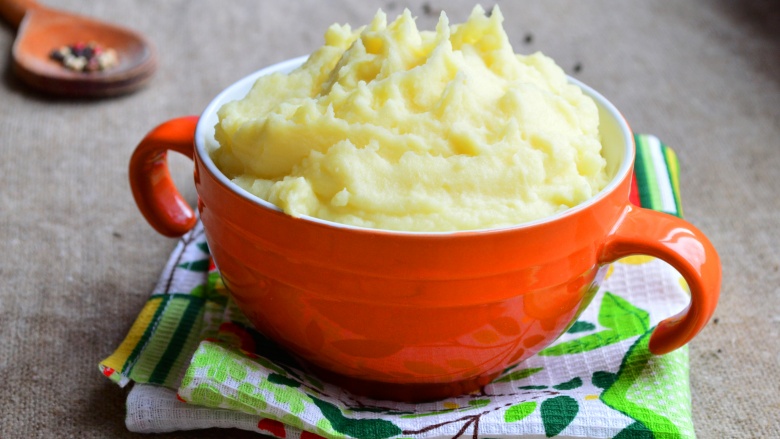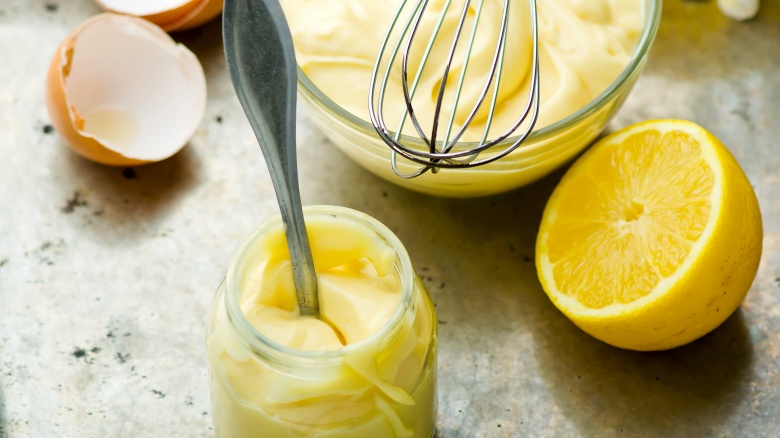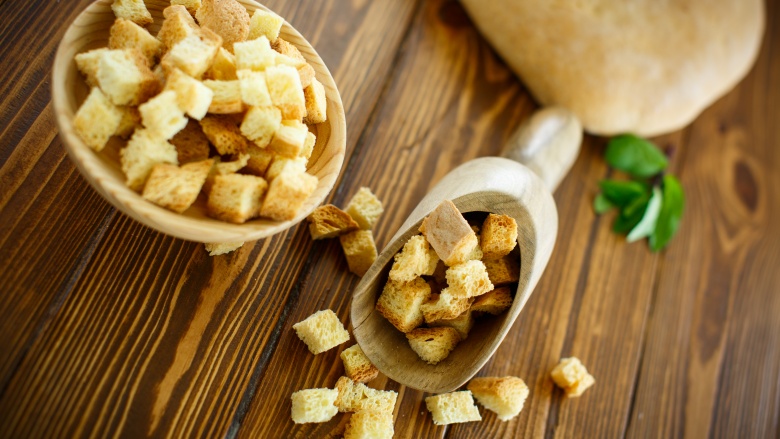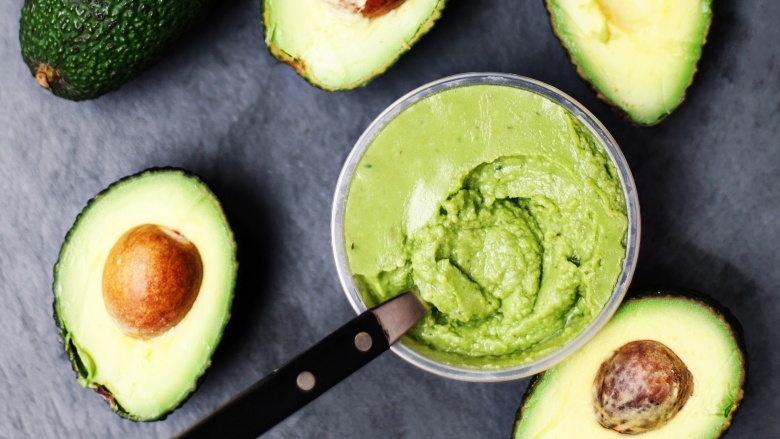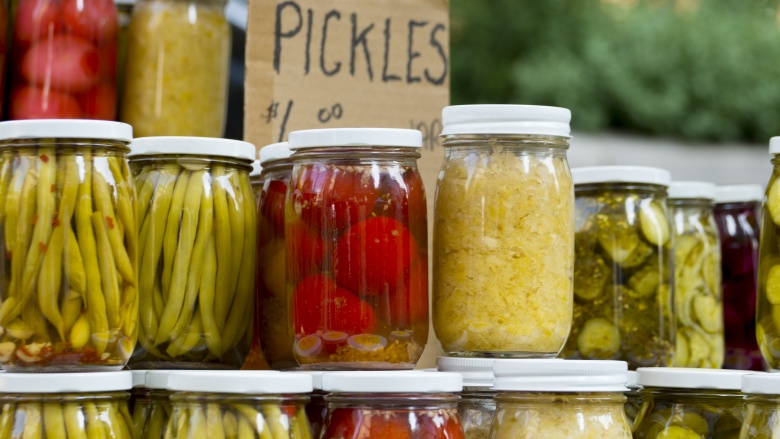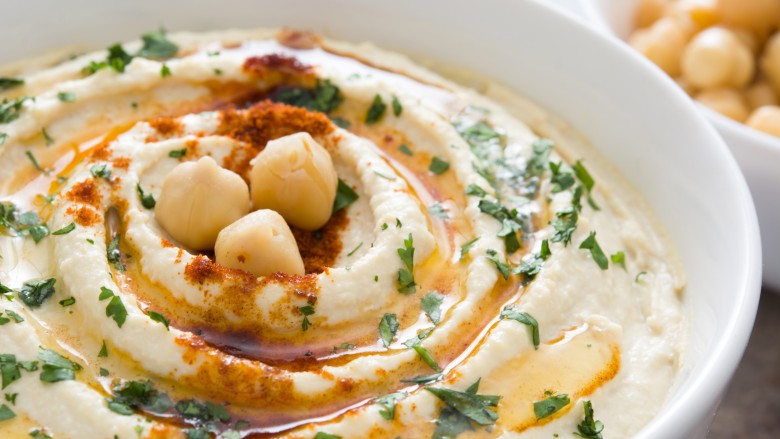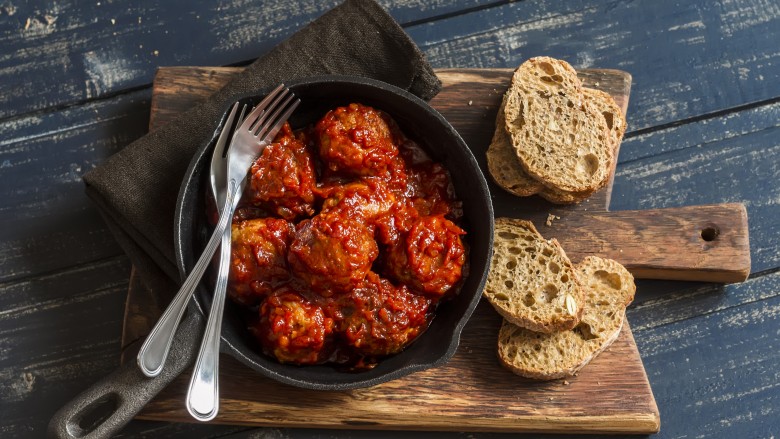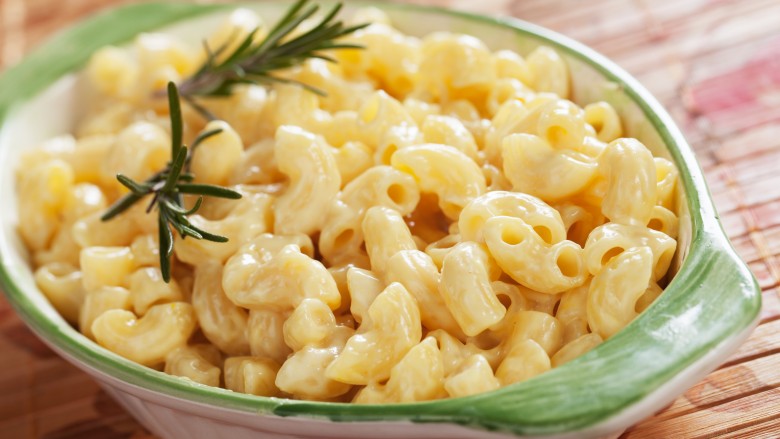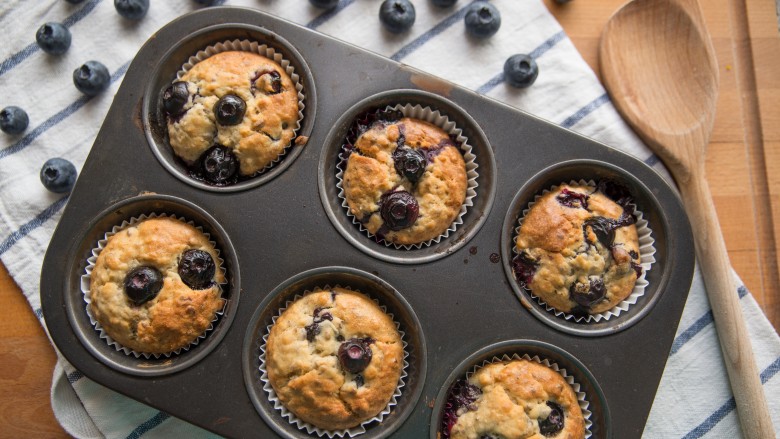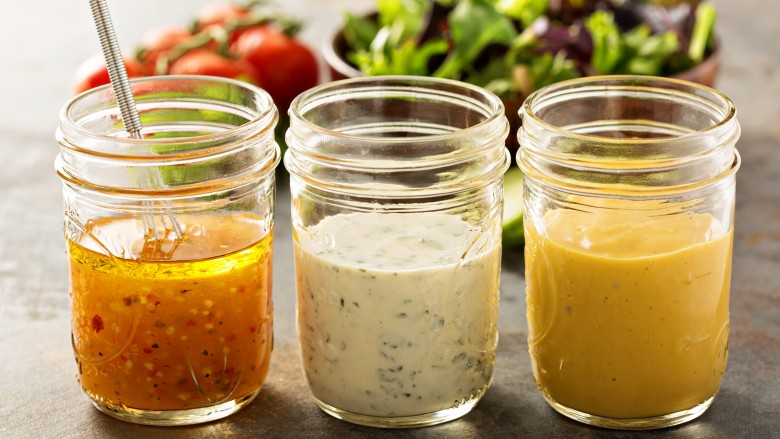Foods That Taste Better Homemade
There is a good reason why food always tasted better at Grandma's house — chances are, she was creating a majority of those delicious meals from scratch. But since the birth of supermarkets, busy homemakers spend far less time traveling from butcher to baker to fishmonger to accumulate ingredients for their family's meals, and more time fixing up packaged and processed foods everyone can make and eat quickly. But just a few extra steps in the kitchen can yield the kind of homemade results your grandmother would be proud of, especially on these easy-to-make foods that always taste better homemade.
Mashed potatoes
Put that box of freeze-dried spuds down! If you can boil water, you're halfway to your goal of making a delicious bowl of homemade mashed potatoes. Lighter and fluffier than their processed counterpart, homemade mashed potatoes can elevate your game from cafeteria-style to Thanksgiving-worthy in a snap. Russet potatoes, with their high starch content, tend to absorb butter and cream easily, making them the winning variety of spud in the mashed potato department.
Stocks
The base of a seemingly endless array of classic recipes, boxed or canned stocks and broths are readily available in your grocery store aisle. Ask a professional chef the secret touch to their most famous dishes, however, and there's a good chance they will tell you it's all in their homemade stock. While a good stock does need to bubble away on the stovetop for a lengthy period of time, the prep work is pretty darn simple. Pile some bones and veggies in a pot, cover with water, crank up the heat, and walk away. A few hours later, you'll be left with a mouth-watering stock that can be used as a base for soups, stews, sautees, and gravies ... just to name a few. Go ahead and make a huge pot too, because stock freezes brilliantly.
Mayonnaise
Take a look inside your fridge, pull out that tub of mayonnaise, and read the epic, small-typed list of ingredients. Did you need eye drops before you reached the end? Loaded with preservatives, fillers, and low-cost substitutes, processed mayonnaise's creators seem to have forgotten the mayo secret known by many a home cook: real mayonnaise can be made with only five or six simple ingredients that you probably already have in your kitchen. All you need are egg yolks, mustard, vinegar and/or lemon juice, oil, and salt to make a gourmet-quality, homemade mayonnaise. Emulsified using a whisk or a blender, a simple mayonnaise recipe can be enhanced with additions like garlic, chipotle peppers, or fresh herbs.
Croutons and crostini
Can't get enough of the tantalizingly crispy and flavorful croutons at your favorite restaurant? It's a pretty good bet those crusty babies did not come out of a cardboard box! While some restaurants may employ the use of an industrial deep-fryer, there's no need to fire up the heavy machinery to get restaurant-quality croutons at home. All you need is an oven, a loaf of bread, some cooking oil or butter, and your favorite herbs and spices. Not just for salads anymore, croutons in various shapes and sizes are the ideal topping for French Onion soup, and are the base of a delicious bruschetta ("Crouton" is French for "crust," and "Crostini" is Italian for "little crust.") Croutons are large-batch friendly, meaning they won't become stale quickly if kept in an air-tight container, so go ahead and go crouton crazy. Trust us, nobody will mind.
Guacamole
Nothing ruins the heavenly flavor of a fresh avocado like the copious amounts of chemical preservatives and starchy fillers that are jam-packed into supermarket-brand guacamole. Due to a pesky enzyme called polyphenol oxidase (which avocados are brimming with,) the flesh of a freshly cut avocado browns within 10 or 15 minutes of slicing. This challenge for the big processed food companies makes guacamole the ideal food to make at home. Be sure to use ripe avocados, and to add an acid like lime juice which will delay the oxidation process. Even when made perfectly, homemade guacamole should be consumed within an hour or two after making it ... if you can wait that long.
Cookies
Thousands of varieties of cookies may be available at the supermarket, but none will hold a candle to the homemade batches your Grandma would have made. Beginner bakers will be happy to know that baking homemade cookies is a pretty easy process, with most recipes being as simple as stirring up a batter, dropping spoonfuls onto a cookie sheet, and popping into your oven. The "Toll House" variety of chocolate chip cookie, invented in 1937, is a favorite among cookie fans, and a great recipe to try out if it's your first homemade batch.
Pickles
Pickling isn't just for cucumbers! A wide variety of fruits and veggies, even eggs, stand up well to the pickling process. Pickled foods have a very long lifespan, due to fermentation, which also adds loads of tummy-friendly probiotics, similar to those found in yogurt. If you don't have the patience to wait the days or weeks that a typical pickle recipe would require, get your fix by making a quick pickle. Quick pickles can be made in hours or even minutes ... sliced red onions seeped in a little vinegar and salt for just a half-hour will deliver a super-delicious, and tangy, sandwich topper.
Bread
Now you're ready for the big leagues! Bread-making requires some practice and diligence (or an electric bread maker, if you happen to own one.) Unlike "quick breads" (think muffins, biscuits, or pancakes), which don't require active yeast, true bread must undergo a multiple leavening and rising process, which means you may not achieve perfect results on your first go. Don't let that sway you, however. Most bread recipes contain fairly low-cost ingredients, making it the perfect kitchen experiment to have fun with on a rainy weekend. Get ready to make some new friends, as the aroma of freshly baked, homemade bread is one that few can resist.
Hummus
When you control the ingredients, you control the quality of the foods you make. Making hummus with quality olive oil, fresh garlic and herbs, and the right amount of tahini that you want for flavor is going to seriously beat any hummus sold at the supermarket. All you need are some rinsed, canned chickpeas to start, and the rest is up to you. Get creative with spices like cumin, smoked paprika, and cayenne pepper for some serious heat. Make a large batch to spread on toast and sandwiches or to eat with veggie sticks for a healthy, protein-filled snack.
Meatballs
Sure, those giant sacks of frozen meatballs are great if you're preparing sweet and sour slow cooker meatballs for a party, but they aren't gonna taste like Grandma's. The key to delicious meatballs is an assortment of ground meats. Pork, beef, and veal is the classic Italian-American combo, but it's not a hard and fast rule. You could also try ground lamb in the mix, or lighten up your meatballs with chicken and turkey. Add some diced, lightly sauteed onions, plenty of salt and pepper, an egg for binder, and your choice of breadcrumbs. Torn bread, panko, and even crushed crackers all work well. Moisten the mixture a bit with some milk or half-and-half, and mix with your hands until just incorporated. Now roll those balls! As big or as little as you please, as long as you adjust the cook time accordingly. Will you bake them off in the oven, fry them in a pan, or let them slow-cook in your favorite sauce? It's your call!
Mac and cheese
Never made a homemade mac and cheese before? Well, it's time you graduated from the blue box. Boil up a couple cups of your favorite pasta (almost any will do), and make yourself a super simple cheese sauce. A quick flour and butter roux will provide the starter. Then add milk, cheese, and maybe a dash of mustard or hot sauce. The quality and sharpness of the cheese you select is really going to give your mac and cheese its punch. Stir it all together, and voila! Homemade mac and cheese! Enjoy as is or transfer your creamy concoction to a baking dish, cover with breadcrumbs, and finish in the oven for a crowd-pleasing dish.
Muffins
Once you try your hand at baking a batch of homemade muffins, you'll never go back to store-bought again. Muffins are a quick bread, meaning there's no need to bother with packets of yeast or resting and rising doughs. The only major decisions you need to make are which flavor of muffin you want to create and how big they should be. Paper or foil muffin cups will make your job easier, but a well-greased muffin tin will do the trick, too. Muffins are a make-ahead dream. Eat what you want today and freeze the rest for later in a gallon freezer bag. When you're ready to enjoy them again, a quick trip to the oven or microwave will provide you with a warm homemade breakfast or teatime treat.
Salad dressing
Even the supposedly "healthy" brands of bottled salad dressings you find at the market are loaded with a bevy of unrecognizable gums, stabilizers, cheap oils, and additives. Why would you want to pour that on top of your fresh, nutritious salad? A blender or food processor will help you to transform a few ingredients into a fresh and zippy dressing that will store well in your fridge for a week or two. Start with a nice olive oil, and add some acids like fresh-squeezed lemon juice, tart red wine vinegar, sweet balsamic vinegar, or apple cider vinegar. Season with salt and pepper, and get creative with fresh herbs, spices, and veggies, which can all be pulverized into a delicious and nutrient-packed dressing for salads, steamed veggies, or baked fish and chicken.

